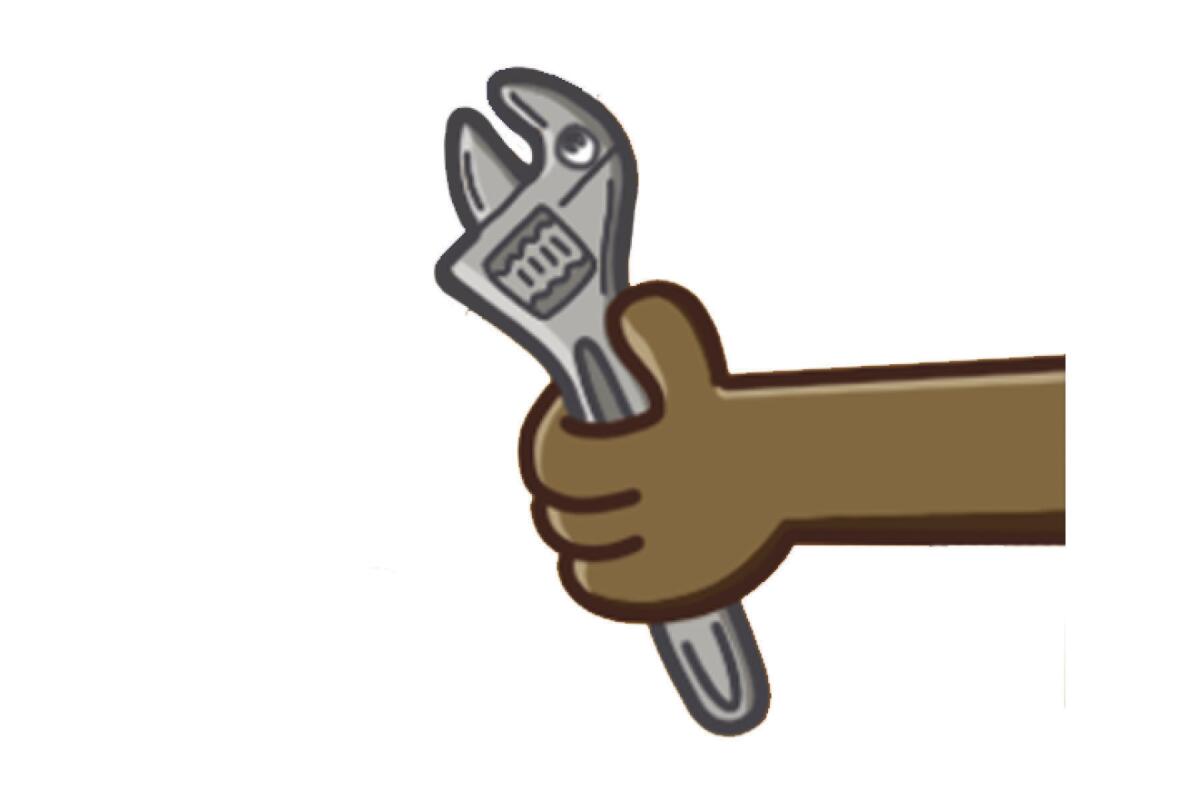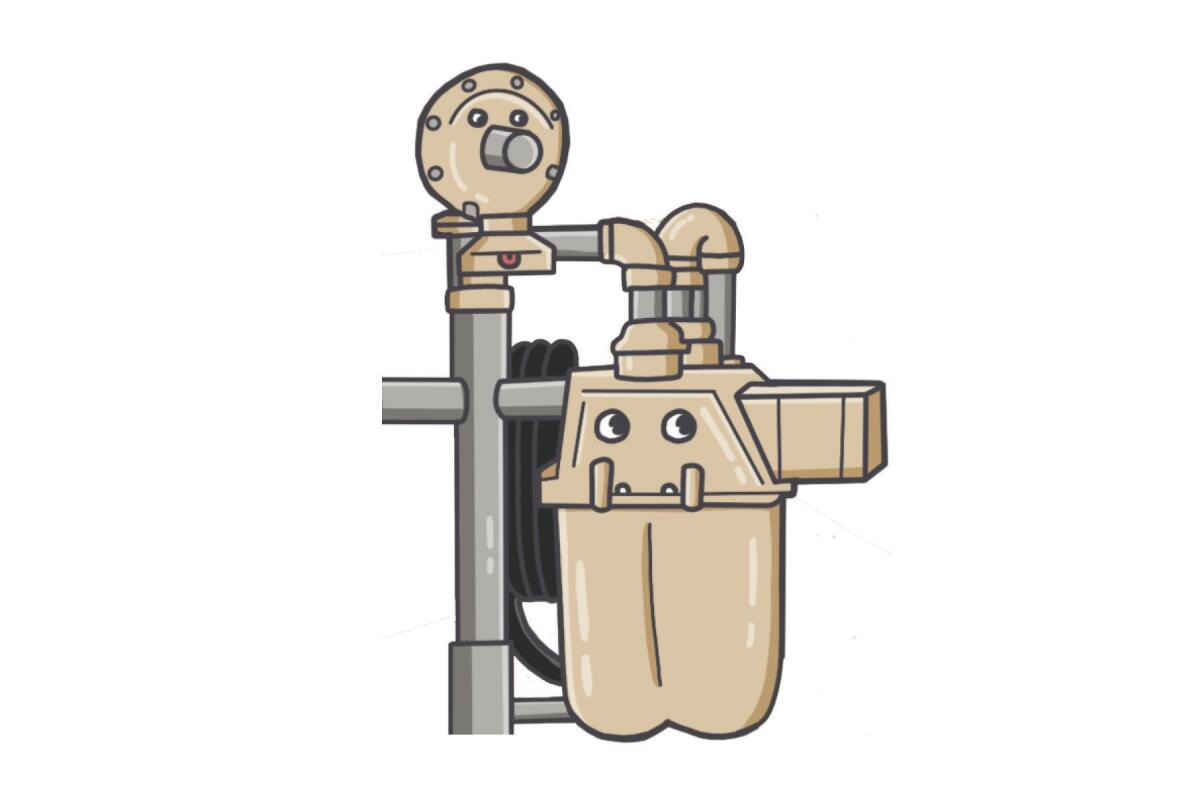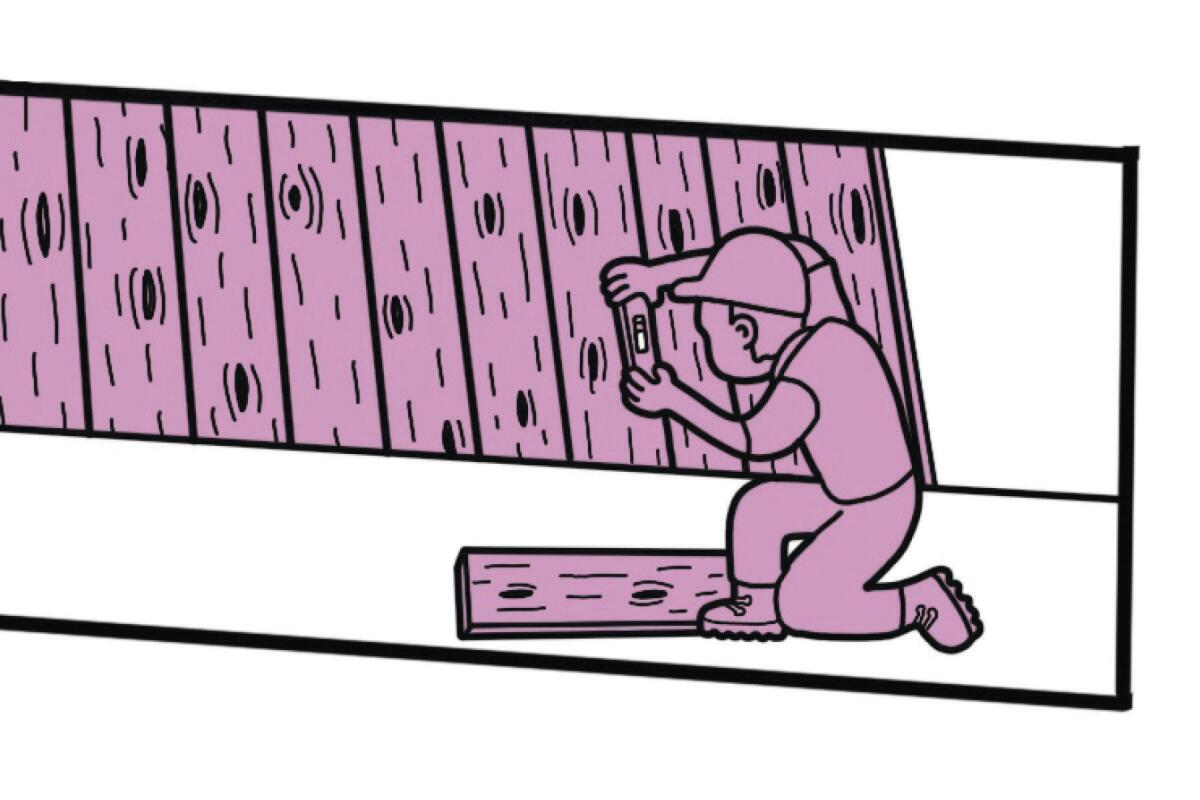Unshaken, Week 4: How to protect your home from earthquake damage

- Share via
Hello! My name is Ada Tseng, and I’m an assistant editor on the utility journalism team at The Times. Welcome to Week 4 of Unshaken, the L.A. Times newsletter guide to earthquake readiness and resilience. We’re breaking down disaster preparedness into digestible to-do lists so you can get ready without getting stressed.
Now that we’re halfway through, you know how to make earthquake kits and how to secure the stuff inside your home. So let’s take a look outside — with the help of Madalyn Amato, an L.A. Times intern who also has you covered on the science of earthquakes and retrofitting your house.
These fixes might require a little more handiwork and even the help of a professional.
Here’s a look at what you can do yourself — and what you probably shouldn’t.
Know how to turn off your gas, water and electricity
Gas leaks can lead to carbon monoxide poisoning and fires. About one in four fires after an earthquake is related to natural gas leaks. So you’ll need to know how to shut off your gas if necessary.

First, you’re going to need an adjustable wrench that is 12 inches or larger. Then find your gas meter. It’s often on a sideyard. (Southern California Gas Co.’s website shows four other gas meter types: under-the-house, cabinet meter, multiple and underground.) Talk to your landlord if you live in an apartment complex and can’t find it.
Then, locate the shutoff on the pipe coming out of the ground. But don’t turn it off today! Once it’s off, you can’t turn it back on without a professional.
Shutting off the gas requires a wrench, so if you don’t have one handy, consider securing a 12-inch wrench somewhere near the gas meter so you don’t have to go searching for one during an emergency. For a manual shutoff, you’ll know the gas is on if the shutoff valve is parallel to the pipe. Turning the valve a quarter turn, so that it’s perpendicular to the pipe, will shut off the flow of gas.
When you’re checking your meter after an earthquake, turn it off only if you smell a leak or hear it hissing or whistling. Once you turn it off, do not try to turn it back on. Call the gas company or a qualified plumber.
If that sounds like too much responsibility, you could have a professional install an automatic gas shutoff valve. This will shut off the gas if enough seismic activity or a leak is detected. Note that in some places, automatic shutoffs are required. You may already have one if you live in a newer home, a condo or a home that you purchased within the last 20 years. Check your local building codes to be sure.

Depending on damage or leaks, you may also need to turn off the water or electricity.
Agenda item: Locate your gas meter and understand how and why you might need to shut it off (but don’t shut it off now). Call a professional if you’d rather have an automatic shutoff.
Call a professional
Some of the improvements you may need to make are too technical for the average homeowner. Renters or apartment-dwellers shouldn’t take these on themselves, but if you rent in Los Angeles, you can look up what work has been done or needs to be done at your address.
Here’s what you need to know about retrofits and similar work.
Relatively simple retrofitting can keep raised-foundation homes (common for pre-1980 builds in Southern California) from sliding off their foundations, according to Janiele Maffei, chief mitigation officer for the California Earthquake Authority. These homes have a crawl space between the floor of the house and the concrete foundation, and the flimsy wood-frame perimeter that the house rests on could snap during an earthquake.

Standard Plan Set 1 and the FEMA P-1100 are both pre-engineered plans that allow contractors and skilled do-it-yourselfers the ability to seismically retrofit a raised-foundation house. (Renters, consult with your landlord about risks and any requirements where you live. Requirements vary; here are Los Angeles’ and Santa Monica’s, for example.)
This common type of retrofitting takes the least amount of time and is the least expensive. Keith Whallett, chief executive of L.A.-based Foundation Works, estimated that the process takes about a day and costs about $4,500. All the work is done under the home, so whether you’re doing it yourself or calling in a contractor, your daily life can go on uninterrupted.
The Earthquake Authority has a guide to different types of houses and how vulnerable they are to shifting or collapsing.
There’s also an Earthquake Brace + Bolt (EBB) program that California homeowners can apply for. It provides up to $3,000 to strengthen your home and lessen the potential for earthquake damage. Visit the website and sign up for email updates for information on how to register.
Support our journalism
Subscribe to the Los Angeles Times.
Other things to consider
Unlike securing the stuff inside your home, securing the home itself isn’t as easy. So if you can afford it, it doesn’t hurt to hire an expert or talk to your landlord when your safety’s at stake. A pro can find any structural defects in your home and identify cracks in ceilings and foundations that need fixing.
Here are some other things to consider:
— Hillside homes: These may be at risk of pulling away from their foundation and require additional support to reduce movement. But any modifications require an engineer’s expertise and can cost $10,000 or more.
— Living spaces over garages: Additional reinforcements may be needed for garages that have living spaces over them. They may have less bracing, particularly at the vehicle entrance, and pose a risk of swaying and collapse.
— Other structures: External parts of the home such as decks, porches, carports or canopies need to be secured, especially if they are only minimally attached to the main building. It’s important that these don’t fall and block exits from your home.
— Chimneys: It might be time to get rid of your brick chimney. Chimneys can fall in an earthquake, and they account for the most common type of damage during larger California quakes. There are minor retrofitting options — including adding layers of plywood, replacing the upper part of the chimney with metal or adding a diagonal steel brace — but none of those are guaranteed to keep the chimney from falling. If you don’t need it to be functional, you could place a steel tube down the structure and fill it with concrete. A more expensive but safer option is to remove the chimney completely or rebuild it.
Agenda item: If you rent, talk to your landlord about these issues and determine what work has been done or might be planned or required. If you own your home, assess risk factors outside — dwelling spaces over garages, foundations, chimneys — and consult a professional.
Look for the next installment of Unshaken, the L.A. Times newsletter guide to earthquake readiness and resilience, in your inbox on Friday. Your fifth assignment will be to create a family plan. We’ll walk you through it. See you then. (Times subscribers can access the complete course here.)
More resources
— One of the most important things you can do to prepare for an earthquake is talk to your neighbors, writes seismologist Lucy Jones.
— Thinking of buying a premade earthquake kit? We unboxed four of them, from $30 to $300.
— If all you have to eat in your emergency kit are granola bars and canned tuna, here’s how to up your game. Plus here’s some advice from L.A. food people.
— How does California’s earthquake early-warning system work? And what apps should you have on your phone?
Sign up for Essential California
The most important California stories and recommendations in your inbox every morning.
You may occasionally receive promotional content from the Los Angeles Times.





